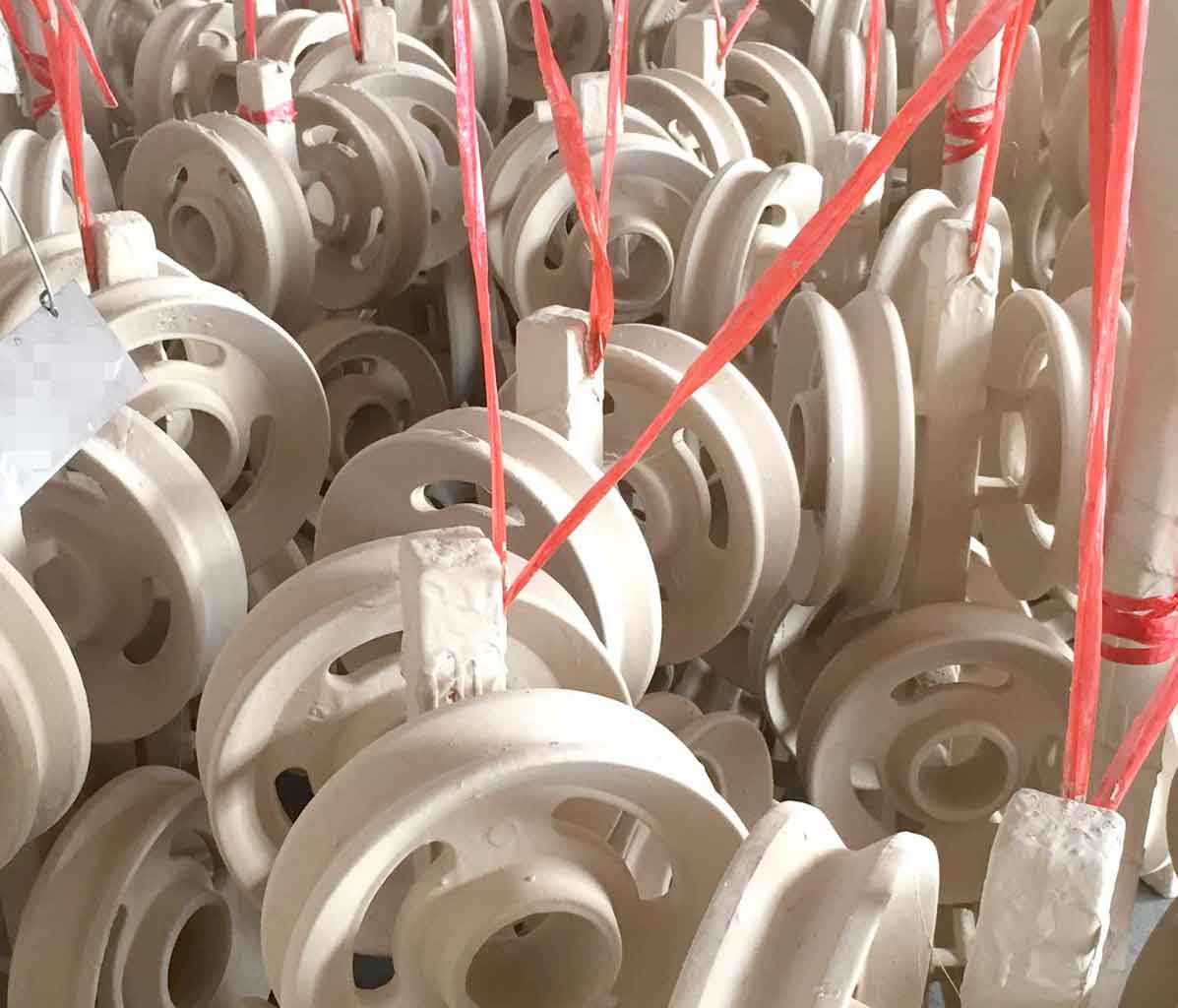Lost foam casting coating is different from traditional sand mold coating. The surface of lost foam castings is the inner surface of the coating in contact with the pattern rather than the outer surface. The thickness and flow marks of lost foam casting coating will not affect the dimensional accuracy and surface quality of lost foam castings. Coating and hanging processes include immersion method, drenching method, brushing method, spraying method, etc. The dip coating method has high efficiency and uniform coating. It is often used as coating for lost foam casting with large batch and complex shape. For large and medium-sized patterns produced in small batch, brush coating method is adopted. For thin, easily deformed or easily damaged models, spray coating method is adopted. During dip coating, in order to prevent the deformation of the model, we must pay attention to the immersion direction and minimize the immersion resistance. The coating thickness is determined by the shape, wall thickness, complexity, alloy type and metal static head of lost foam castings, which is generally within the range of 0.25-1.5mm.

The drying methods of lost foam casting coating mainly include natural drying, hot air drying, drying room drying, microwave drying, etc. The temperature of forced drying is controlled at 50-60 ℃, and the time is about 2-5 hours. The weight when the model reaches the drying state is constant, and the drying time must be determined through experiments. At the initial stage of coating drying, the drying speed is fast. Generally speaking, about 70-80% of the water can be removed within 20-30% of the total drying time, while the remaining 20% – 30% of the water needs 70-80% of the total drying time to be removed. In recent years, far infrared and microwave drying methods have been developed abroad. The coating secondary heating rapid drying method has obtained a patent in the United States. For the first time, the module is sprayed with hot air at 49-71 ° C for 30-90 minutes to evaporate 60-80% of the water. For the second time, the module is put into a microwave oven for 15 minutes. The combination of the two methods can give full play to the advantages of the two methods, and its biggest advantage is that the porosity of the coating is greatly improved after drying.
